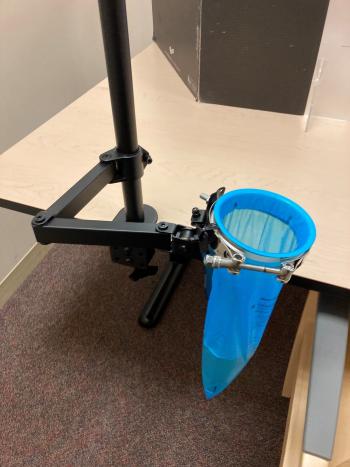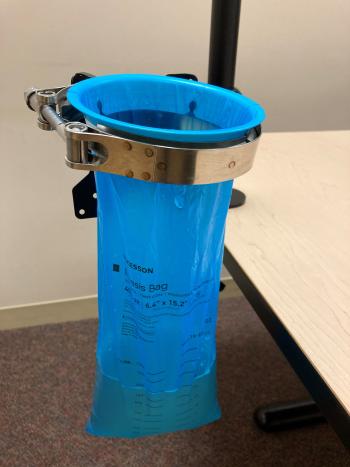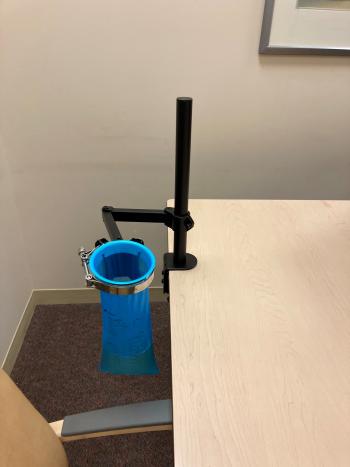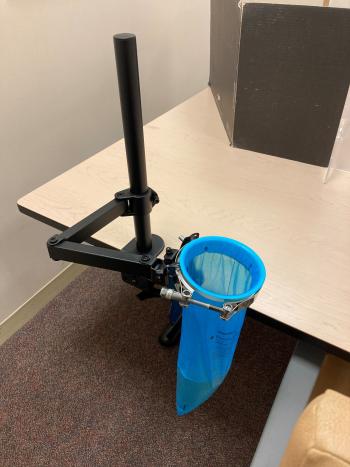Section of Sensory Science, and Metabolism


Contact Information
- Office: 301-827-5234
- Lab: 301-339-4869
- Fax: 301- 480-1413
- Mailing Address
Section of Sensory Science, and Metabolism (SenSMet)
10 Center Drive
Building 10, Room 2A07
Bethesda, MD 20892
Overview of the Lab
Our senses are essential for us to interact with the world. Our five senses–sight, hearing, touch, taste, and smell work closely to enable the mind to understand its surroundings better. In humans, chemical senses mediate safety, nutrition, the sensation of pleasure, and general well-being. Taste, olfaction, and chemesthesis (refers to chemical irritation from the burning of chili peppers, the cooling of menthol, and the tingling of soda) are involved in the perception of flavor for food and beverages. Chemosensory perceptions, which can influence food/beverage choices and consumption, may be altered and differ in individuals with obesity and alcohol use disorder. Given that both obesity and excessive alcohol consumption are major public health issues, our lab focuses on these two disorders to further characterize how the chemical senses may be contributing to the mechanism of alcohol consumption and overeating. Currently, little is known about the underlying neurobiological and molecular mechanisms causing variations in the chemosensory systems in individuals with obesity and alcohol use disorder, limiting the interventions currently available to address these critical issues.
Mission Statement
The Section of Sensory Science and Metabolism (SenSMet) aims to understand neuronal and molecular mechanisms underlying chemosensation (taste, smell & chemesthesis), in addition to understanding motivational and reward pathways of ingestive behaviors and how they might differ in individuals with obesity and alcohol and substance use disorders. We are particularly interested in studying how the brain incorporates chemosensory information from the external environment and its internal states to guide eating/ingestive behavior. To achieve this goal, our laboratory conducts clinical-translational inpatient and outpatient studies. We use a combination of biobehavioral and innovative validated psychophysical methods for human studies. We also use imaging brain techniques, such as fMRI for olfaction and gustation. To provide mechanistic insight into our clinical research, we are also conducting preclinical studies using rodent models to understand cellular and molecular mechanisms that influence how the brain perceives the chemical senses (taste, smell, chemesthesis) and feeding behavior in a state of disease (e.g., obesity and substance use disorders). The SenSMet lab is currently investigating the interplay among biological and behavioral components of chemosensation in the context of diseases, with a particular emphasis on metabolic disorders like obesity and brain diseases, particularly alcohol and substance use disorders, given that both obesity and alcohol and substance use disorders share common brain mechanisms associated with the chemical senses. Besides, due to reports of taste and smell loss from individuals affected by COVID-19, our lab began investigating chemosensation and COVID-19. We want to understand the effects of the SARS-CoV-2 virus on the chemical senses.
Research Projects
We are addressing the following questions:
- How is chemosensation altered in AUD and obesity and what molecular pathways are perturbated associated with chemosensation?
- How processing of taste (fat, salt, umami, bitter, and sour) and smell in the brain influences hedonic responses, eating and alcohol seeking behaviors?
- What are mechanisms by which SARS-CoV-2 affects the chemical senses?
Clinical Protocol
SenSmet Protocols
- Mechanisms Underlying Individual Variations of Taste and Smell in Obesity
- Individual Variations of Taste and Smell Perception in Alcohol Use Disorder (AUD)
Collaborative Protocols:
- Unit and Clinic Evaluation, Screening, Assessment and Management (14-AA-0181)
- Exploring Gut-Brain and Brain-Gut Interactions in Alcohol Use Disorder via Microbiota Investigations: A Pilot Study (17-AA-0093)
- COVID-19 Pandemic Impact on Alcohol and Related Outcomes
- Transmissibility and viral load of SARS-COV2 through oral secretions
- Brain Dopamine Function in Human Obesity (18-DK-0132)
- GENE-FORECASTSM: Genomics, Environmental Factors and Social Determinants of Cardiovascular Disease in African-Americans Study (14-HG-0048)
Lab Members







Selected Publications
Joseph PV, Reed DR, Mennella JA. Individual Differences Among Children in Sucrose Detection Thresholds: Relationship With Age, Gender, and Bitter Taste Genotype. Nurs Res. 2016 Jan-Feb;65(1):3-12. doi: 10.1097/NNR.0000000000000138. PMID: 26633761; PMCID: PMC4679349.
Cooper KW, Brann DH, Farruggia MC, Bhutani S, Pellegrino R, Tsukahara T, Weinreb C, Joseph PV, Larson ED, Parma V, Albers MW, Barlow LA, Datta SR, Di Pizio A. COVID-19 and the Chemical Senses: Supporting Players Take Center Stage. Neuron. 2020 Jul 22;107(2):219-233. doi: 10.1016/j.neuron.2020.06.032. Epub 2020 Jul 1. PMID: 32640192; PMCID: PMC7328585.
Gerkin RC, Ohla K, Veldhuizen MG, Joseph PV, et al. Recent smell loss is the best predictor of COVID-19: a preregistered, cross-sectional study. Chemical Senses, bjaa081, doi: 10.1093/chemse/bjaa081 PMID: 32743605; PMCID: PMC7386529.
Joseph PV, Nolden A, Kober KM, Paul SM, Cooper BA, Conley YP, Hammer MJ, Wright F, Levine JD, Miaskowski C. Fatigue, Stress, and Functional Status are Associated With Taste Changes in Oncology Patients Receiving Chemotherapy. J Pain Symptom Manage. 2020 Nov 28:S0885-3924(20)30899-X. doi: 10.1016/j.jpainsymman.2020.11.029. Epub ahead of print. PMID: 33259906.
Joseph PV, Wang Y, Fourie NH, Henderson WA. A computational framework for predicting obesity risk based on optimizing and integrating genetic risk score and gene expression profiles. PLoS One. 2018 May 24;13(5):e0197843. doi: 10.1371/journal.pone.0197843. PMID: 29795655; PMCID: PMC5993110.
Joseph PV, Davidson HR, Boulineaux CM, Fourie NH, Franks AT, Abey SK, Henderson WA. Eating Behavior, Stress, and Adiposity: Discordance Between Perception and Physiology. Biol Res Nurs. 2018 Oct;20(5):531-540. doi: 10.1177/1099800418779460. Epub 2018 May 31. PMID: 29852756; PMCID: PMC6346320.
Joseph PV, Jaime-Lara RB, Wang Y, Xiang L, Henderson WA. Comprehensive and Systematic Analysis of Gene Expression Patterns Associated with Body Mass Index. Sci Rep. 2019 May 15;9(1):7447. doi: 10.1038/s41598-019-43881-5. PMID: 31092860; PMCID: PMC6520409.
Hall KD, Ayuketah A, Brychta R, Cai H, Cassimatis T, Chen KY, Chung ST, Costa E, Courville A, Darcey V, Fletcher LA, Forde CG, Gharib AM, Guo J, Howard R, Joseph PV, McGehee S, Ouwerkerk R, Raisinger K, Rozga I, Stagliano M, Walter M, Walter PJ, Yang S, Zhou M. Ultra-Processed Diets Cause Excess Calorie Intake and Weight Gain: An Inpatient Randomized Controlled Trial of Ad Libitum Food Intake. Cell Metab. 2019 Jul 2;30(1):67-77.e3. doi: 10.1016/j.cmet.2019.05.008. Epub 2019 May 16. Erratum in: Cell Metab. 2019 Jul 2;30(1):226. Erratum in: Cell Metab. 2020 Oct 6;32(4):690. PMID: 31105044.
Kure Liu C, Joseph PV, Feldman DE, Kroll DS, Burns JA, Manza P, Volkow ND, Wang GJ. Brain Imaging of Taste Perception in Obesity: a Review. Curr Nutr Rep. 2019 Jun;8(2):108-119. doi: 10.1007/s13668-019-0269-y. PMID: 30945140; PMCID: PMC6486899.
Other Lab Resources
Alumni
Postdoctoral Fellows
- Carlotta Vizioli, PhD, Postdoctoral Visiting Fellow 2019-2021, Research Fellow, NIH National Institute of Neurological Disorders and Stroke (NINDS)
- Markos Tesfaye, MD, PhD, Postdoctoral Visiting Fellow 2019-2021, Associate Professor of Psychiatry at
Jimma University, Ethiopia
Postbaccalaurate Fellows
- Alexis Franks, BS., Post -Bac IRTA Fellow 2017-2020, Doctor of Physical Therapy student at Duke University
- Abhrarup (Abe) Roy, BS., Post -Bac IRTA Fellow 2017-2019, Medical Student, Cooper Hospital
- Brianna Brooks, BA, Postbaccalaureate IRTA, 2019-2021, PhD Student in Nutrition, Columbia University
- Rodrigo Ortiz, BS, Postbaccalaureate IRTA, NIH Academy 2019-2021, Medical Student at Ponce Health
Sciences University - Leann To, BS, Postbaccalaureate IRTA, NIH Academy 2021-2022, University of Pittsburgh, Pittsburgh,
PA, Master of Science in Genetic Counseling - Christian McDuffie, BS, Postbaccalaureate IRTA, NIH Academy 2020-2022, Masters in Public Health, George
Washington University
Summer Fellows
- Emma Butturini, AMGEN Scholar, Summer Internship Program 2017
- Miriam Weiss, BSN., Summer Internship Program 2018, PhD student University of Maryland
- Kavisha Silva, Summer Internship Program 2018
- Natalia Iannarino, BS, Summer Internship Program 2019
- Erica Holland, Summer Internship Program 2019
Device Design for Emesis Collection During Taste Studies
Photos depict an adjustable metal device that allows for hands-free collection of taste testing expectorants in emesis bags. The device attaches to the tabletop with a clamp and has one arm holding the emesis bag open. The height of the bag from the floor is adjustable.







